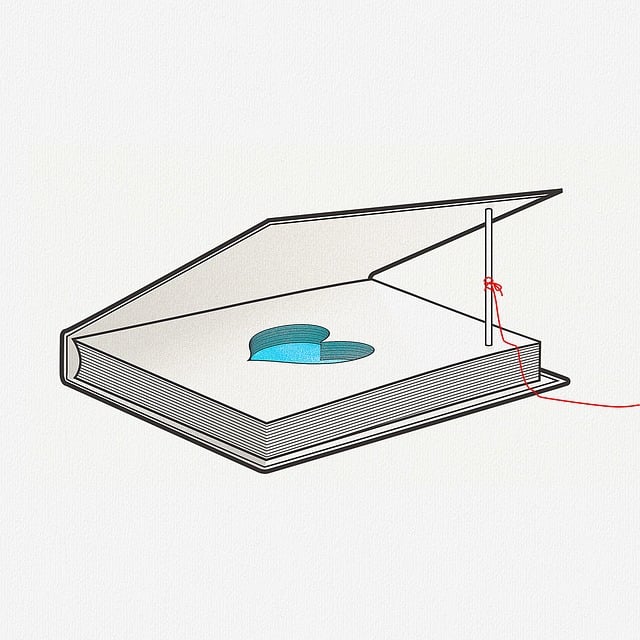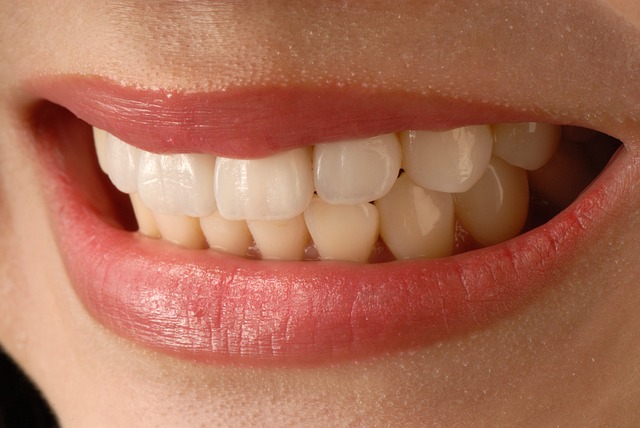Confused about dental implants and veneers? Look no further! This detailed comparison will demystify the differences between these two popular dental procedures. Get ready to find out which one is right for you!
1. Understanding the Difference: Dental Implants vs. Veneers
When it comes to addressing dental issues, dental implants and veneers are two common solutions. While both options aim to enhance your smile, they serve different purposes and require different procedures. Understanding the difference between dental implants and veneers is crucial in determining which treatment is best suited for your specific needs.
Dental Implants:
Dental implants are a permanent solution for missing teeth. These titanium screw-like structures are surgically placed in your jawbone to replace a missing tooth root. Once the implant has integrated with the jawbone, a dental crown is attached to it, creating a natural-looking and functional replacement for the missing tooth. Dental implants offer several benefits, including improved chewing ability, preservation of jawbone density, and prevention of surrounding teeth from shifting.
Veneers:
Veneers, on the other hand, are thin porcelain shells that are custom-made to fit over the front surface of your teeth. They are primarily used to improve the appearance of teeth that are discolored, chipped, misaligned, or irregularly shaped. Veneers can quickly transform your smile, providing a natural-looking and aesthetically pleasing result. The application of veneers does not involve any surgical procedure, making it a popular choice for those seeking to enhance the appearance of their teeth without invasive treatment.
2. Functional and Aesthetic Solutions: Exploring Dental Implants and Veneers
When it comes to restoring a flawless smile, dental implants and veneers are two popular options that offer both functional and aesthetic solutions. Let’s delve into the benefits and differences of these two treatments:
- Dental implants: These advanced dental devices are designed to replace missing teeth and provide a long-lasting solution. By surgically inserting a titanium post into the jawbone, dental implants act as the foundation for attaching artificial teeth. Not only do they offer a natural look and feel, but they also help maintain facial structure and promote jawbone health. With proper care, dental implants can last a lifetime, making them a reliable choice for many individuals.
- Veneers: If you’re looking to transform the appearance of your teeth, veneers are a versatile and aesthetically pleasing option. Thin custom-made shells made of porcelain or composite material are bonded to the front surface of your teeth. Veneers can effectively correct a variety of dental imperfections, such as chipped, stained, or misaligned teeth. Additionally, they offer a durable and stain-resistant solution that can last for several years with proper maintenance.
Both dental implants and veneers provide functional and aesthetic benefits, but the choice ultimately depends on your specific needs and goals. Consulting with a qualified dentist will ensure a personalized treatment plan that fits your unique dental situation, giving you the confidence to smile brightly once again.
3. What are Dental Implants? Unveiling the Technological Marvel
Dental implants are a remarkable advancement in modern dentistry that offers a stable and long-lasting solution for replacing missing teeth. These implants are small titanium posts that are surgically placed into the jawbone, taking the place of the roots of natural teeth. Their biocompatible properties allow bone to fuse with the implant, providing a strong foundation for a replacement tooth.
Here are some key features and benefits of dental implants:
- Improved appearance and smile: Dental implants look, feel, and function just like natural teeth, restoring your smile and confidence.
- Enhanced oral health: Unlike traditional bridges, implants do not require adjacent teeth to be altered, resulting in better long-term oral health.
- Durability: With proper care, dental implants can last a lifetime, providing a permanent solution for missing teeth.
- Improved speech and comfort: Implants eliminate the discomfort and speech issues commonly associated with removable dentures.
- Bone preservation: By stimulating natural bone growth, implants help prevent bone loss and preserve facial structure.
Thanks to their exceptional success rate and numerous advantages, dental implants have become the gold standard in tooth replacement options. If you have missing teeth, consider exploring this technological marvel for a beautiful, functional, and long-lasting solution.
4. Veneers: The Art of Enhancing Your Smile
Veneers are a popular cosmetic dentistry solution that can greatly improve the appearance of your smile. These thin shells, typically made of porcelain, are custom-made to fit over the front surface of your teeth. By doing so, veneers can correct a variety of dental imperfections and enhance the overall look of your teeth.
One of the greatest advantages of veneers is their versatility. Whether you have chipped, cracked, discolored, or even misaligned teeth, veneers can help address these issues and give you a brilliantly white and even smile. The process of getting veneers is relatively quick and painless. First, the dentist will remove a small amount of enamel from your teeth to create space for the veneers. Then, impressions of your teeth will be taken and sent to a dental laboratory, where skilled technicians will craft your custom veneers. Finally, the veneers will be bonded to your teeth, resulting in a beautiful transformation that can last for many years with proper care.
With veneers, you can achieve a smile that looks naturally flawless and can boost your confidence. The translucent porcelain material used for veneers mimics the appearance of natural tooth enamel, giving you a bright and natural-looking smile. Additionally, veneers are resistant to staining, so you can enjoy your favorite foods and beverages without worrying about discoloration. As veneers are a permanent solution, they require regular oral hygiene practices, such as brushing and flossing, to maintain their longevity. Remember to schedule regular dental check-ups to ensure the health and integrity of your veneers, and your smile will continue to shine for years to come.
5. When to Consider Dental Implants: Evaluating Your Options
When it comes to replacing missing teeth, dental implants are often considered the gold standard in modern dentistry. However, before you decide if dental implants are the right option for you, it’s important to thoroughly evaluate your options. Here are a few key factors to consider:
1. Bone Health: Dental implants require a certain amount of healthy bone structure to anchor securely. If you’ve experienced bone loss due to periodontal disease or long-term tooth loss, a bone graft may be necessary before implants can be placed.
2. Overall Oral Health: Evaluating the current condition of your oral health is crucial before opting for dental implants. Teeth and gums should be free from decay, infection, or active periodontal disease to ensure successful implant integration.
3. Age: Age is not a deterrent for dental implants, but it can affect healing and long-term success. A thorough evaluation by your dentist will help determine if your age could impact the outcome of the procedure.
4. Cost: Dental implants may represent a more significant upfront investment compared to other tooth replacement options. However, when considering their longevity and the potential for lower maintenance costs over time, implants often provide excellent value.
6. Achieving a Perfect Smile: The Role of Veneers
Do you dream of having a dazzling smile? Veneers may be just the solution you’ve been searching for! These thin shells of porcelain or composite resin are custom-made to fit perfectly over your teeth, helping to achieve that perfect smile you’ve always desired.
But what exactly do veneers do? Here are a few key roles they play in enhancing your smile:
- Conceal Imperfections: Veneers are designed to cover up a range of dental flaws including chips, cracks, and stains. Whether your teeth have been discolored due to certain medications or years of coffee consumption, veneers can instantly transform your smile, giving you a natural-looking appearance.
- Straighten Misaligned Teeth: If you have minor misalignments or gaps between your teeth, veneers can help create the illusion of a straighter smile. By placing veneers strategically, your dentist can enhance the symmetry and overall alignment of your teeth.
- Reshape Teeth: Don’t like the shape or size of your teeth? Veneers can help. From lengthening shortened teeth to filling in gaps, veneers can drastically improve the overall shape and proportions of your smile, giving you a harmonious and balanced look.
- Provide Durability: Veneers are made from high-quality materials that are extremely durable. With proper care and maintenance, they can last for many years, allowing you to enjoy your beautiful smile for the long term.
When it comes to achieving the smile of your dreams, veneers can play a crucial role. Talk to your dentist today to learn more about this cosmetic dentistry option and how it can transform your smile!
7. The Procedure: How Dental Implants and Veneers are Installed
Dental implants are a popular and effective solution for replacing missing teeth. The procedure begins with a thorough examination by a dental specialist to determine if the patient is a suitable candidate. Once the patient has been deemed eligible, the first step is to surgically place a titanium post into the jawbone. This post acts as the foundation for the implant. Over the course of several months, the post integrates with the jawbone through a process called osseointegration, providing a strong and sturdy base for the implant.
After the healing period, an abutment is attached to the post, which connects the implant to the artificial tooth. Impressions of the teeth are taken to create a custom-made crown that matches the color and shape of the surrounding natural teeth. This crown is then securely attached to the abutment, completing the dental implant procedure. The result is a highly durable, functional, and natural-looking replacement tooth that blends seamlessly with the rest of the patient’s smile.
When it comes to veneers, the process is typically less invasive and involves a few key steps. Firstly, a consultation is conducted to discuss the desired outcome and determine if veneers are the most appropriate solution for the patient. If so, a thin layer of enamel is gently removed from the front surface of the tooth to make room for the veneer. Next, impressions are taken to create custom-made veneers that will enhance the appearance of the teeth.
Once the veneers are ready, they are carefully bonded to the teeth using a specialized dental cement. This ensures a strong and long-lasting bond. Finally, any excess material is removed, and the veneers are polished to create a natural-looking finish. The end result is a beautiful, symmetrical smile that can dramatically improve the appearance of the teeth and boost the patient’s self-confidence.
8. Aesthetic Transformations: Comparing the Longevity of Dental Implants and Veneers
When it comes to enhancing your smile, both dental implants and veneers offer aesthetic transformations that can greatly improve the appearance of your teeth. However, it’s important to understand the differences in longevity between these two options before making a decision.
Dental implants are titanium screws that are surgically placed into the jawbone, acting as artificial tooth roots. They provide a sturdy foundation for a dental crown, bridge, or dentures. With proper care and maintenance, dental implants have the potential to last a lifetime, making them an excellent long-term solution for replacing missing teeth. Their durability is largely attributed to their ability to integrate with the surrounding bone, providing stability and preventing bone loss. This offers not only a lasting aesthetic transformation but also functional benefits, such as improved biting and chewing capabilities.
- Dental implants have a high success rate, typically exceeding 95%.
- They are resistant to decay and cavities since they are made of biocompatible materials.
- Their natural appearance blends seamlessly with the rest of your teeth.
- Implants do not require alteration of adjacent healthy teeth, preserving their integrity.
Veneers, on the other hand, are custom-made, thin porcelain shells that are bonded to the front surface of your teeth to correct minor cosmetic flaws. While veneers can provide an immediate transformation, they have a lifespan of approximately 10-15 years. After this time, they may need to be replaced due to wear and tear or discoloration. Regular dental visits and good oral hygiene can help prolong the lifespan of veneers. Therefore, if you’re looking for a less invasive and reversible option for improving your smile, veneers can be a suitable choice.
- Veneers are stain-resistant, maintaining their bright, natural appearance for years.
- They can effectively conceal a wide range of cosmetic issues, such as stained, chipped, or misaligned teeth.
- Minimal tooth preparation is required, making the procedure relatively quick and comfortable.
- Veneers are a reversible treatment, as they can be removed without damaging the underlying tooth structure.
9. Fact vs. Fiction: Debunking Common Myths about Dental Implants and Veneers
When considering dental implants or veneers, there are numerous myths and misconceptions that can cloud your judgment. Let’s clear the air once and for all by debunking some of the most common misconceptions surrounding these dental procedures:
Myth 1: Dental implants are painful and require extensive recovery time.
- Fact: Contrary to popular belief, dental implant procedures are usually not painful.
- Implant surgeries are performed under local anesthesia to ensure your comfort.
- Most patients report minimal discomfort during the recovery phase, and any pain can be easily managed with prescribed medications.
- With proper care and follow-up visits, you can resume normal activities quickly, typically within a few days.
Myth 2: Veneers look unnatural and fake.
- Fact: Today’s advancements in cosmetic dentistry have allowed veneers to appear incredibly natural-looking.
- Porcelain veneers are customized to match the color, shape, and size of your natural teeth, creating a seamless and beautiful smile.
- With the help of a skilled dentist, veneers can enhance your smile while maintaining a natural appearance.
- Modern techniques ensure that the veneers are securely bonded to your teeth, offering long-lasting results and a natural feel.
Don’t let misconceptions keep you from exploring the benefits of dental implants or veneers. By debunking these common myths, we hope to provide you with accurate information to make an informed decision about your dental health.
10. Making the Right Decision: Choosing Between Dental Implants and Veneers
When it comes to enhancing your smile, dental implants and veneers are two popular options to consider. Understanding the differences between these treatments can help you make an informed decision that aligns with your specific dental needs and preferences.
Dental Implants:
- Implants are a permanent solution for replacing missing teeth.
- A biocompatible titanium post is securely placed into the jawbone, providing a solid foundation for the artificial tooth.
- The process involves multiple steps and may require several months to complete.
- Implants look and function like natural teeth, providing a long-lasting and durable solution.
- They are ideal for individuals with healthy gums and sufficient bone density.
Veneers:
- Veneers are thin porcelain shells that are custom-made to cover the front surface of the teeth.
- The procedure is quicker and less invasive compared to dental implants.
- Veneers can address various cosmetic concerns such as discoloration, chips, gaps, and irregularly shaped teeth.
- They provide an instant improvement in the appearance of your smile.
- However, veneers are not suitable for individuals with extensive tooth damage or those requiring tooth replacement.
In conclusion, dental implants and veneers serve different purposes. Implants replace missing teeth, while veneers enhance the appearance of existing ones. Understanding the key differences will help you make an informed decision when considering these dental procedures. So, consult with your dentist to determine the best option for your specific needs.






